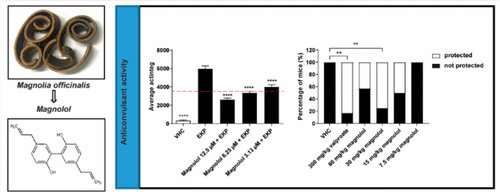Credit: American Chemical Society
In patients with epilepsy, normal neurological activity becomes disrupted, causing debilitating seizures. Now, researchers report in ACS Chemical Neuroscience that they have found a potential new treatment for this disorder by turning to traditional Chinese medicine. Tests of extracts from plants used in these ancient remedies led the team to one compound, derived from a magnolia tree, that could quell drug-resistant seizures in both fish and mice.
Epilepsy is one of the most common neurological diseases worldwide, and the World Health Organization estimates that about 50 million people have the disorder. Medications are available, but they don't help everyone. Research suggests that about 70% of patients with epilepsy can control it well with medication, leaving many patients without effective treatment. But even when they work, the drugs can cause a range of side effects, from dizziness to mood disruptions. To look for new drug leads that could help even those patients who don't respond to conventional anti-seizure medications, Peter de Witte and colleagues set their sights on plants used in traditional Chinese medicine.
The team collected 14 plants used in traditional Chinese medicine anti-seizure remedies. They then tested the plants' extracts in two types of zebrafish with epileptic-like seizures, one of which could respond to conventional anti-seizure medications, whereas the other type could not. Only extracts from the bark of Magnolia officinalis, a tree native to China, reduced seizure-like behavior in both types of fish. In tests with mice, the researchers found that the magnolia bark's most potent anti-seizure compound, magnolol, reduced the rodents' otherwise drug-resistant seizures. It and similar compounds in magnolia bark could provide a starting point for the development of treatments for resistant epilepsy, according to the researchers.
More information: Jing Li et al. Zebrafish-Based Screening of Antiseizure Plants Used in Traditional Chinese Medicine: Magnolia officinalis Extract and Its Constituents Magnolol and Honokiol Exhibit Potent Anticonvulsant Activity in a Therapy-Resistant Epilepsy Model, ACS Chemical Neuroscience (2020). DOI: 10.1021/acschemneuro.9b00610
Journal information: ACS Chemical Neuroscience
Provided by American Chemical Society























